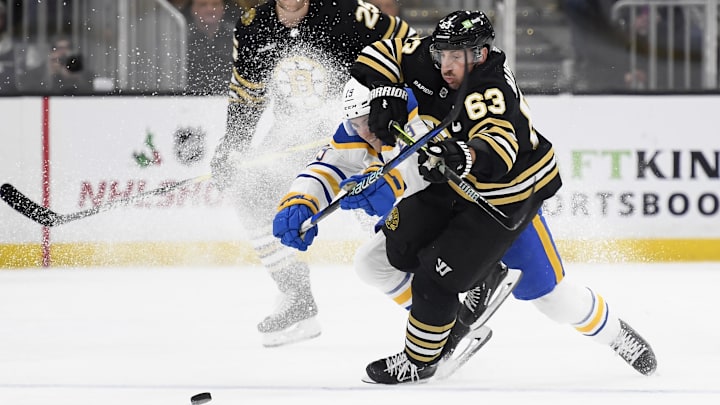High sticking in hockey occurs when a player raises their stick above shoulder level and makes contact with an opponent but above their shoulders. For those who are familiar with the game, it’s easy to point out a high sticking, but if you’re new, it’s tough to distinguish it from slashing.
Further, you may have questions about what the difference is between high sticking and cross-checking, as they can also have some resemblance. Hockey is also such a fast-paced game that it could be a minute before it slows down enough for you to clearly see the differences between these three violations.
Check out the video below for a clear visual of a high sticking penalty, one that occurred when the Sabres were playing the Boston Bruins.
Like slashing and cross-checking, a high sticking penalty often results in a two-minute minor penalty in the box. This is because the opposing player is rarely injured when an opponent commits high sticking, and they’re writhing on the ice with their hands clasped over their face to better “sell” the penalty.
High sticking in hockey often results in minor penalties, but that can change
Whether an offending player injures their opponent, if the official finds blood, the offender can expect to spend an additional two minutes in the box with a four-minute double minor. If a legitimate injury occurs, the offender will find themselves facing a five-minute major, and a game misconduct follows.
High sticking is one of the more unique violations in hockey because it can occur in multiple ways. An offending player doesn’t need to make contact above an opponent’s shoulders for the penalty to be assessed.
At times, you will see a player raise their puck above shoulder height and bat or deflect the puck into the net for a would-be goal. However, that goal is not counted, as the player committed an illegal act to score the goal, similar to a kick-in. This type of high sticking haunted Peyton Krebs in 2023-24 against the Ottawa Senators when he committed the foul in attempting to score a goal.
Funnily enough, Krebs almost immediately wore a guilty look, and even the most die-hard fans of the Blue and Gold had to admit that the would-be goal wasn’t going to count. When a player makes contact with the puck and not another player during a high sticking violation, they are not sent to the penalty box.
What happens if a player commits high sticking and no goal is scored?
If a player tries batting the puck out of midair and there is no goal scored, there may be a stoppage in play, and a faceoff ensues. Should this occur, the team whose player commits the high sticking violation will be forced for the faceoff to begin in the defensive zone, even if the violation took place in the offensive zone.
Play will not stop if the player commits the infraction and the opposing team gains puck possession. In that case, play resumes as usual, as it would negate a potential scoring chance for the opponent should an official blow their whistle to stop play.
There is also a chance that a player commits high sticking in the defensive zone and bats the puck into their own net. Should that occur, they just made things tougher for their team since it will count as a goal for their opponent. That said, if you’re following the Sabres this season, you may find yourself shouting at the TV or your phone for those closest to the net to keep their sticks below shoulder height.
